Role of Iron in Plant Culture
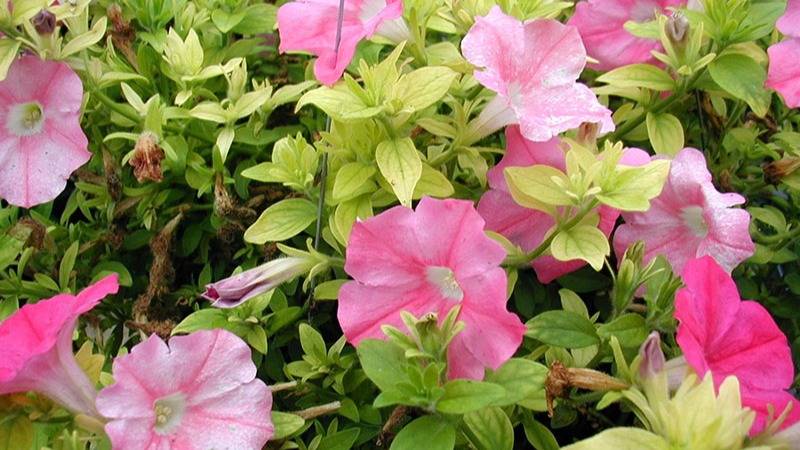
Iron (Fe) is classified as a micronutrient, meaning it is required by plants in lesser amounts than primary or secondary macronutrients. Do not let the classification create confusion as iron is very important to the health and growth of plants. Of the micronutrients, iron is needed in the greatest quantity and its availability is dependent on the pH of the growing medium. All micronutrients, except molybdenum, become less available as the growing medium's pH increases, but become more available as the growing medium's pH decreases. The ideal pH range for crops is determined primarily by their ability to acquire micronutrients.
Function of Iron
Iron is a constituent of several enzymes and some pigments, and assists in nitrate and sulfate reduction and energy production within the plant. Although iron is not used in the synthesis of chlorophyll (the green pigment in leaves), it is essential for its formation. This explains why plants deficient in iron show chlorosis in the new leaves.
Iron Deficiency
Iron deficiency is expressed as an interveinal chlorosis of the new leaves (leaves are yellow with green veins). To determine the cause of the deficiency, first examine the roots. Plant roots that are diseased or stressed from overwatering do not take up nutrients efficiently, causing chlorosis. It is important to allow the growing medium to dry out between waterings to reduce plant stress and to apply an appropriate fungicide drench if roots are diseased.
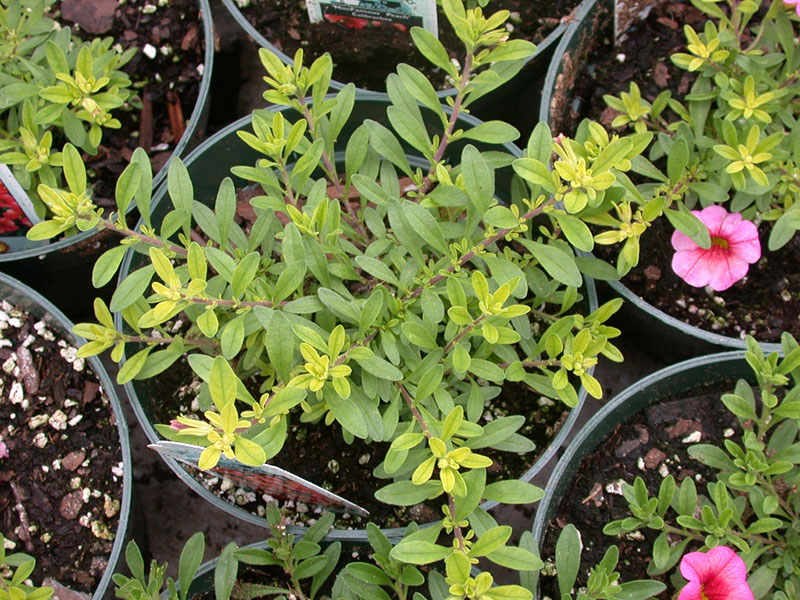
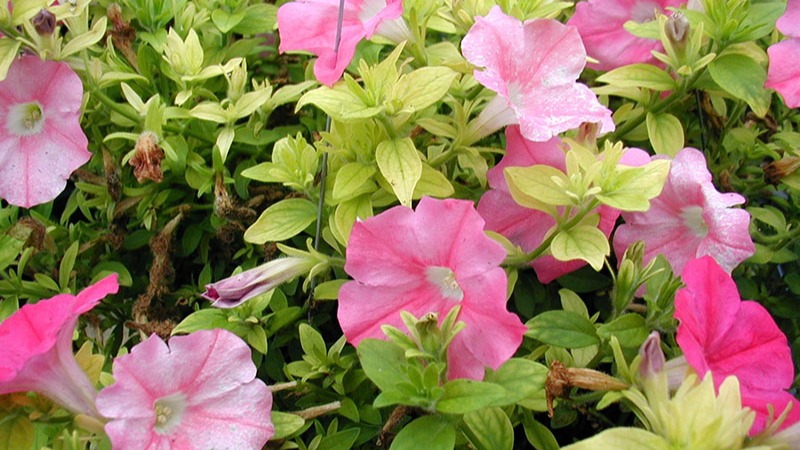
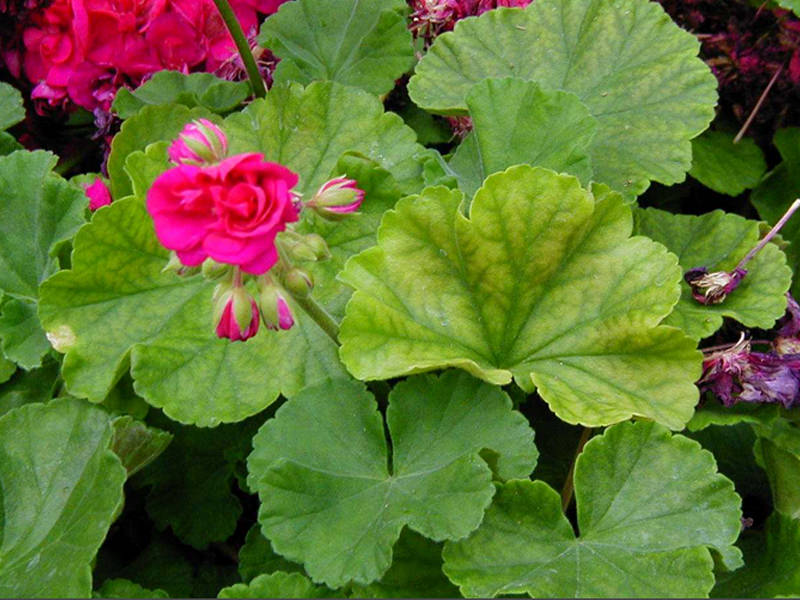
If the roots are healthy, send a sample of the growing medium and plant tissue from several plants to a lab for verification. The pH of the growing medium directly affects the uptake of iron by plants. If the pH of the growing medium exceeds 6.5, iron is converted to a form that is unavailable to the plant, causing a deficiency. The pH of the growing medium can be reduced by acidifying the irrigation water and/or using a fertilizer with a higher potential acidity. Since this may take up to a few weeks to correct the problem, chelated iron can be used to quickly green up the plants. The most effective chelating agent is iron-EDDHA. However, iron-DTPA is almost as good.
If testing shows iron is deficient in the growing medium and tissue, but that the growing medium pH is normal, look at the fertilizer application rate. Fertilizing at low nitrogen rates means that iron is also being applied at low rates. Increasing the fertilizer application rate may take care of the problem. However, calibrachoa, diascia, petunia, scaevola, snapdragon, etc. require additional iron over and above what most fertilizers supply. Therefore, iron chelates may need to be added to your fertilizer program.
Another reason for testing is to check the levels of other micronutrients in the growing medium and tissue. Often, the deficiency symptoms of manganese and other micronutrients look like an iron deficiency. Correcting an iron deficiency will not help if another micronutrient is deficient.
Iron Toxicity
Iron toxicity occurs due to a low growing medium pH or from an excessive application of iron. Iron-manganese toxicity, as it is commonly referred to, is more common in zonal geraniums, African marigolds, lisianthus, New Guinea impatiens, pentas, or other crops that prefer the growing medium's pH to be 5.8-6.6. Again, have the growing medium and tissue tested to confirm the problem. If the pH of the growing medium is a problem, but less than 0.5 pH unit below the normal range for the plant, alternate fertilizer applications with a potentially basic fertilizer (15-0-15, 14-0-14, 13-2-13, etc.) and, if applicable, refrain from injecting acid.
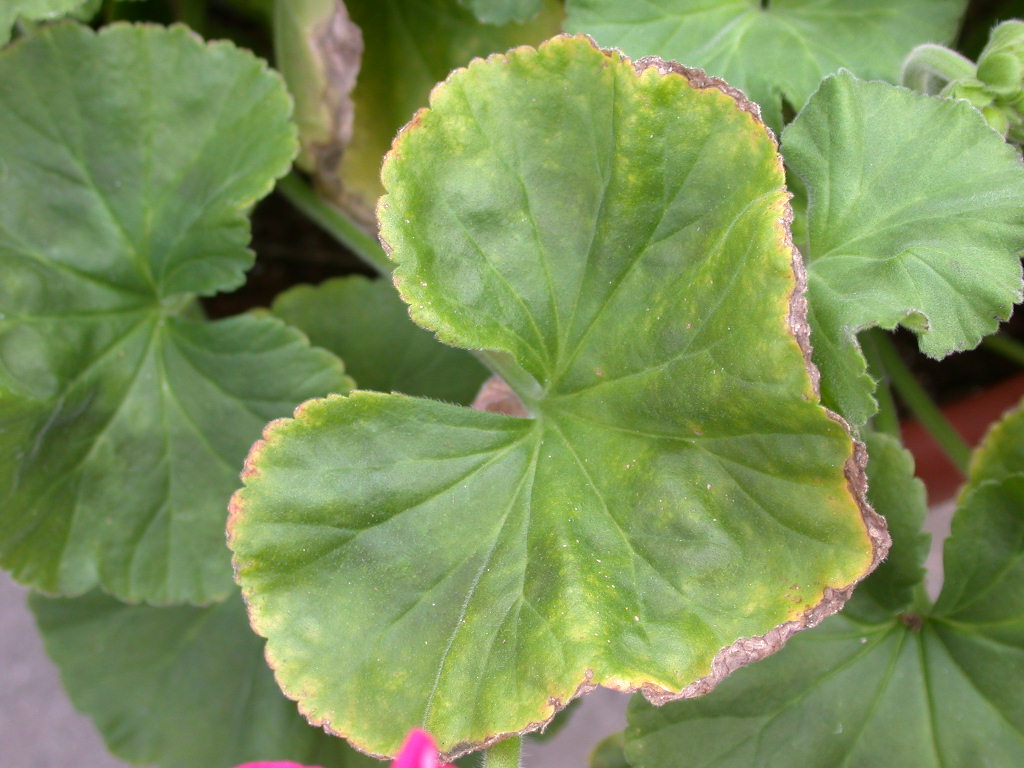
If the pH of the growing medium is more than 0.5 unit below the normal range, drench with potassium bicarbonate or liquid limestone. With either product, rinse the foliage with clear water to remove residues and avoid phytotoxicity. Potassium bicarbonate (2 lb/100 gallons of water) adjusts a growing medium's pH quickly but provides 933 ppm potassium and increases soluble salt levels in the growing medium. Liquid limestone does not increase EC and has a longer staying power, but takes one week to fully adjust pH. Keep in mind that it is abrasive to injectors and requires agitation in stock solutions.
Iron Sources
A few water sources provide sufficient iron for most crops, but this is unusual. Iron is typically provided by a fertilizer and most plants prefer a constant iron application rate of 1 ppm. Plants such as calibrachoa, diascia, petunia, scaevola, snapdragon, etc. prefer higher iron application rates, so it may be best to supplement with an iron chelate as suggested above.
